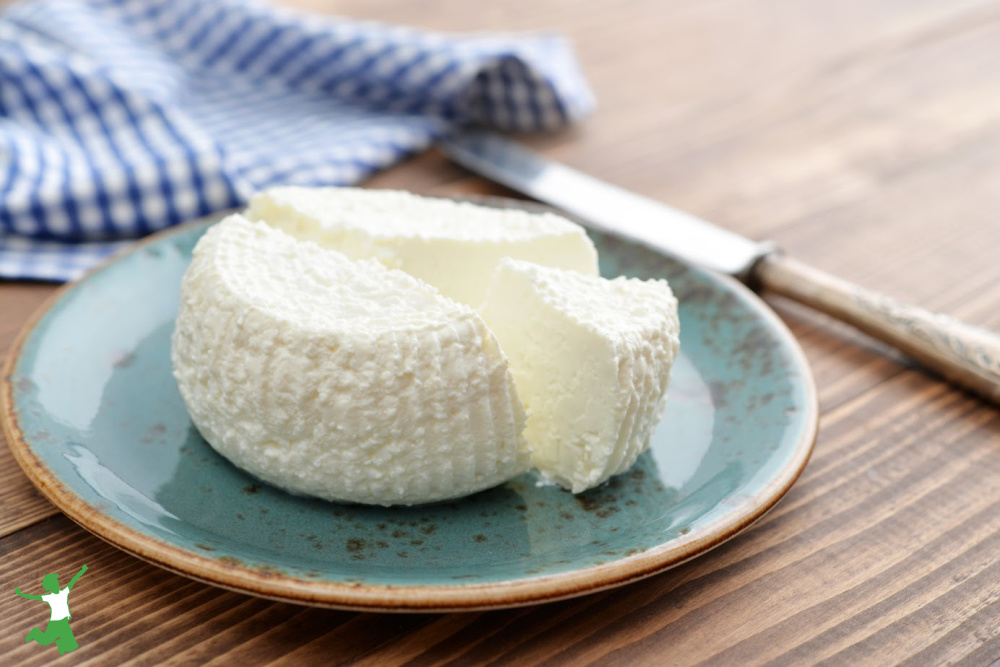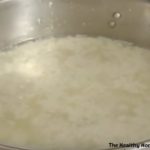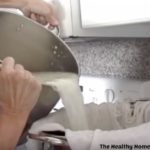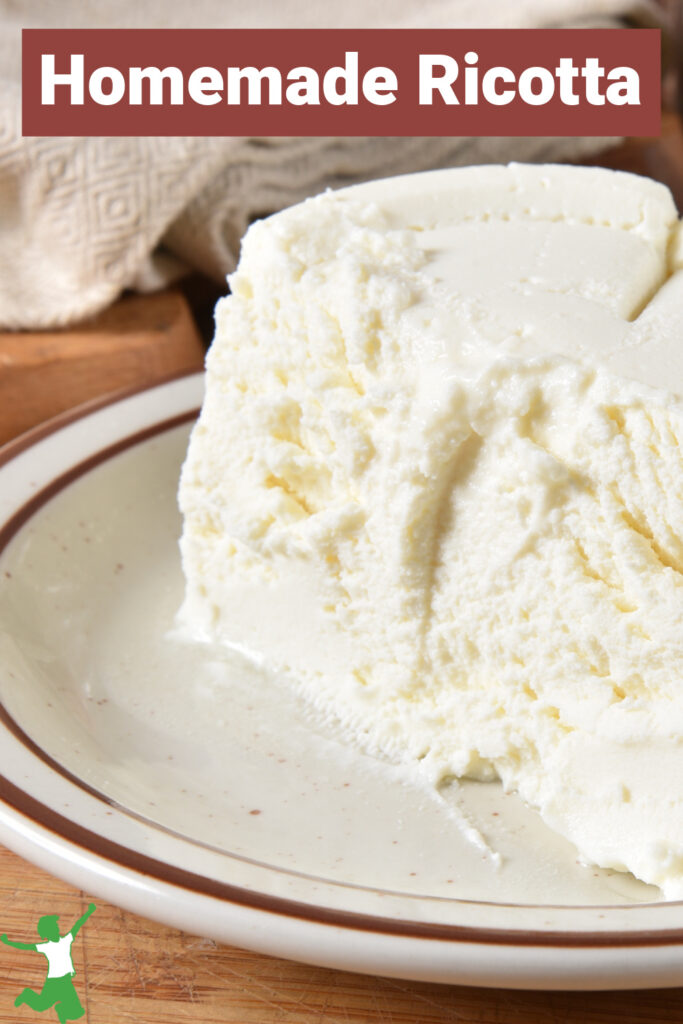Table of Contents[Hide][Show]
How to make homemade ricotta cheese in three different ways including the traditional recipe I use plus a video demonstration.

If you are interested in trying your hand at making cheese, ricotta is a great one to try first.
The deliciously sweet, creamy ricotta curds are slightly off-white in color with a taste and texture a bit reminiscent of whole milk cottage cheese or quark.
The great news is that messing up ricotta is just about impossible!
It is one of the easiest and perhaps the best cheese you will ever attempt. The results are so delectable you will no doubt be making it over and over again.
I first learned to make ricotta along with a number of other cheeses many years ago when an expert cheesemaker from Wisconsin (where else?) hosted a class in my home.
The session was extremely fun and informative, and the techniques I learned I continue to use to this day!
Three Ricotta Methods
Did you know that there are actually 3 different ways to make ricotta?
Similar to the different methods for making buttermilk, selecting an approach for making ricotta is totally up to you.
I cover all three approaches in the video lesson below.
In addition, the simplest method that I prefer using raw pastured milk is included as a written recipe.
Choose whichever method suits you best using whichever type of milk or whey you have on hand and locally available in your community.

Homemade Ricotta Recipe
Recipe for the easiest of the three different methods for making homemade ricotta using raw milk.
Ingredients
- 1 gallon raw milk slightly soured
- 1 stockpot
- 1 stainless steel colander
- 1 cheesecloth fine mesh
- 1 large rubber band
Instructions
-
Pour slightly sour raw milk into a large stockpot. If the raw milk is very sour or slightly clabbered, do not use as the ricotta will not turn out sweet.
-
Put stockpot on large burner and turn on to medium-high heat. Keep a close eye on the pot. Within 5-10 minutes, the milk will start to separate as shown in the photo. Remove pot from heat immediately. Overcooking will destroy the delicate texture of the ricotta.

-
Line a stainless steel colander with a fine mesh cheesecloth folded in half. Place the lined colander into another large pot and carefully pour in the warm, separated raw milk.

-
Let the whey drain from the ricotta cheese for 30 minutes to 1 hour. The longer you let the ricotta drain, the firmer it will be. Keep this in mind so that you achieve the desired consistency for whatever dish you plan to make with the ricotta.

-
Scrape out ricotta from the cheesecloth and use in a dish immediately such as lasagna or store in an airtight container in the refrigerator. It will last about a week refrigerated.
Recipe Video
Recipe Notes
Cow or goat milk may be used to make this homemade ricotta recipe.
More Homemade Cheese Recipes!
If learning to make cheese is exciting to you, check out my other cheesemaking posts!
- Homemade Clabber
- Gjetost Cheese recipe
- Fresh Cream Cheese
- Cheesemaking Common Problems and Solutions
- Probiotic, Whole Milk Cottage Cheese
- How to Make Yogurt Cheese
- Homemade Quark









same queston as janette made the whey cream cheese tastes so sour should it?thx
Sarah – This is my 2nd time making ricotta cheese and we loved it – thank you so much for the great videos – as I was reading through the comments I was looking for any ideas of what to do with the whey if we use the vinegar method. I noticed others had the same question. Do you have any suggestions?
Hi Sarah, can I make Ricotta cheese or the other cheese you mentioned from heating Whey that I have from making cheese from raw milk and rennet?? Or is rennet like vinegar too acid to se used again? Thanks Renate
Hi Sarah,
Love your video’s. I don’t see the ricotta cheese any more, can we access it any where else?
Thanks.
Hi sarah! we love your site..I have just started my family on this new path of healthy living. It is a little over welming but already feel great. my question is about cream cheese/whey. my husband and i made our first whey out of our soured milk..we followed your video to the T..but the next day when we went to eat out cream cheese it tasted so sour and gross:/ i dont know if we did something wrong or if thats the way its suppose to taste. Also if its not good to eat does that mean our whey is also bad? Thanks for all you do for my family :0 you are truley changing lives:) God bless.
Hi Sarah!
Thanks for the video! I let my milk sour on the counter for about a day and then tried the 3rd method in teh video and there was no visible separation, so I added some vinegar (even though it was already heated to over 175) and then it separated. Do you think it is b/c I didn’t let my milk get sour enough? I usually sit it out for 3-4 days for cream cheese/whey, so maybe one day wasn’t enough? Also, the liquid separating out from my cheese is white like milk rather than yellow like whey–did I not let it sit long enough?
Thanks for any help!
First method did not work for me. Heated 1 gal fresh raw cows milk to 175, removed from heat and added 3 tbs vinegar and 1 tsp salt. It barely separated. After a few minutes, returned to heat; heated to almost 200 before finally getting fed up and adding citric acid (called for in the recipe for whole milk ricotta I usually use). Bummed – really wanted it to work without the citric acid. I’ve successfully made whey ricotta using only vinegar and salt, but still never whole milk ricotta.
useing tihs method can you use the whey for other things like to make salsa, lemonaid and so on….
Hi Sarah, I tried to make ricotta today and failed!! I made feta yesterday, could not get to the whey yesterday, put it in the fridge overnight, put it in a pot heated till 190 degrees, added 1 quart of raw goats’ milk and heated back to 190. No curds formed AT ALL!!! I added about 1/2 c vinegar as I had 3 gallons of milk. Still nothing??? can you please tell me what happened? I have followed this recipe alot before with great succes.
ahtank yu